Please sign up for our mailing list to receive updates on IAIFI events.
You can watch our Past Colloquia recordings on YouTube.
Upcoming Colloquia
Past Colloquia
Spring 2024
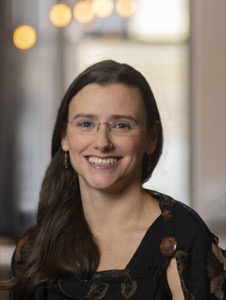
- Laurence Perrault-Levasseur, Assistant Professor, University of Montreal
- Friday, February 9, 2024, 2:00–3:00 pm, MIT Kolker Room (26-414)
- Data-Driven Strong Gravitational Lensing Analysis in the Era of Large Sky Surveys
- Despite the remarkable success of the standard model of cosmology, the lambda CDM model, at predicting the observed structure of the universe over many scales, very little is known about the fundamental nature of its principal constituents: dark matter and dark energy. In the coming years, new surveys and telescopes will provide an opportunity to probe these unknown components. Strong gravitational lensing is emerging as one of the most promising probes of the nature of dark matter, as it can, in principle, measure its clustering properties on sub-galactic scales. The unprecedented volumes of data that will be produced by upcoming surveys like LSST, however, will render traditional analysis methods entirely impractical. In recent years, machine learning has been transforming many aspects of the computational methods we use in astrophysics and cosmology. I will share our recent work in developing machine learning tools for the analysis of strongly lensed systems.
- YouTube Recording | Talk Slides
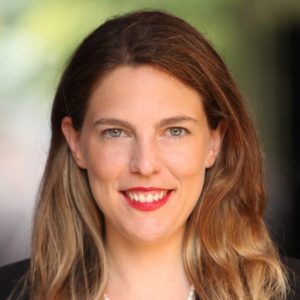
- Soledad Villar, Assistant Professor, Johns Hopkins University
- Friday, March 22, 2024, 2:00–3:00 pm, MIT Kolker Room (26-414)
- Exact and approximate symmetries in machine learning
- In this talk, we explain how we can use invariant theory tools to express machine learning models that preserve symmetries arising from physical law. We consider applications to self-supervised contrastive learning, and cosmology.
- YouTube Recording
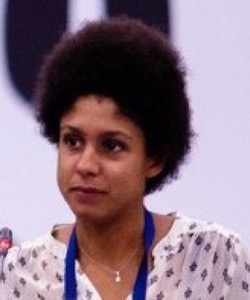
- Jennifer Ngadiuba, Associate Scientist, Fermi National Accelerator Laboratory
- Friday, April 12, 2024, 2:00–3:00 pm, MIT Kolker Room (26-414)
- Accelerating new physics discoveries at the LHC with anomaly detection
- The Large Hadron Collider (LHC) is the world’s largest and most powerful particle accelerator, located at CERN. It has been instrumental in numerous groundbreaking discoveries, including the Higgs boson. Despite these successes, vast portions of potential new physics remain unexplored due to the complexity and sheer volume of data generated by the LHC’s experiments. Traditional methods for analyzing these data often rely on pre-defined models, potentially overlooking novel phenomena that do not fit into existing theoretical frameworks. This talk presents innovative approaches to anomaly detection as a means to unearth new physics signatures from LHC data, accelerating the discovery of phenomena beyond the Standard Model.
- YouTube Recording
Fall 2023
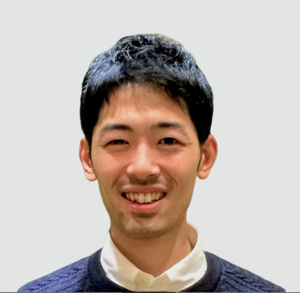
- Hidenori Tanaka, Research Scientist, NTT Research, Harvard University
- Friday, September 15, 2023, 2:00–3:00 pm, MIT Cosman Room (6c-442)
- Physics of Neural Phenomena: Understanding Learning and Computation through Symmetry
- Once described as alchemy, a quantitative science of machine learning is emerging. This talk will seek to unify the scientific approaches taken in machine learning, neuroscience, and physics. We will show how conceptual and mathematical tools in physics, such as symmetry, may illuminate the universal mechanisms behind learning and computation in biological and artificial neural networks. We plan to (i) generalize Noether’s theorem in physics to show how scale symmetry of normalization makes learning more stable and efficient, (ii) propose a new framework for studying compositional generalization in generative models, and (iii) identify phase transitions in the loss landscapes of self-supervised learning as a potential cause of a failure mode called dimensional collapse.
- YouTube Recording
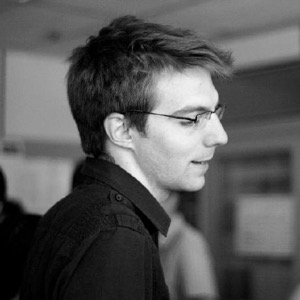
- François Lanusse, Researcher, CNRS
- Friday, October 13, 2023, 2:00–3:00 pm, MIT Kolker Room (26-414)
- Merging Deep Learning with Physical Models for the Analysis of Cosmological Surveys
- As we move towards the next generation of cosmological surveys, our field is facing new and outstanding challenges at all levels of scientific analysis, from pixel-level data reduction to cosmological inference. As powerful as Deep Learning (DL) has proven to be in recent years, in most cases a DL approach alone proves to be insufficient to meet these challenges, and is typically plagued by issues including robustness to covariate shifts, interpretability, and proper uncertainty quantification, impeding their exploitation in scientific analyses. In this talk, I will instead advocate for a unified approach merging the robustness and interpretability of physical models, the proper uncertainty quantification provided by a Bayesian framework, and the inference methodologies and computational frameworks brought about by the Deep Learning revolution. In practice this will mean following two main directions: 1. using deep generative models as a practical way to manipulate implicit distributions (either data- or simulation-driven) within a larger Bayesian framework. 2. Developing automatically differentiable physics models amenable to gradient-based optimization and inference. I will illustrate these concepts in a range of applications in the context of cosmological galaxy surveys, from pixel-level astronomical data processing (e.g. deconvolution), to inferring cosmological parameters through fast and automatically differentiable cosmological N-body simulations. Methodology-wise these examples will involve in particular diffusion generative models, score-enhanced simulation-based inference, and hybrid physical/neural ODEs.
- YouTube Recording | Talk Slides
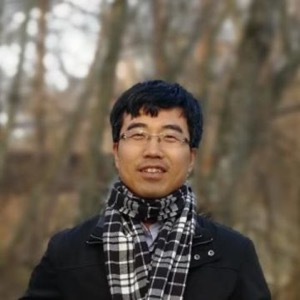
- Xiaoliang Qi, Professor of Physics, Stanford University
- Friday, December 8, 2023, 2:00–3:00 pm, MIT Kolker Room (26-414)
- A Phase Diagram of the Transformer at Initialization
- The growth in the complexity of training modern machine learning architectures is in part due to the large number of hyper-parameters which control their initialization and training. In this work, we study how key hyperparameters such as the activation function, the variance of the weight initialization distribution, and the strength of the residual connections affect the trainability of deep transformers. We find that randomly initialized transfomers exhibit four phases characterized by the vanishing or exploding gradients, and the presence or absence of rank collapse in the token matrix. The standard transformer initialization lies near the intersection of these four phases, balancing these effects. This framework explains the empirical success of modern transformer initialization, and also points to a subtle pathology in the attention mechanism which cannot perfectly balance these competing effects in an extensive phase.
- YouTube Recording
Spring 2023
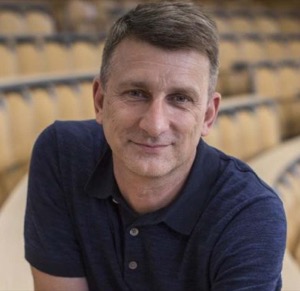
- Uros Seljak, Professor, UC Berkeley
- Friday, April 21, 2023, 2:00–3:00 pm, MIT Kolker Room (26-414)
- Data science techniques for optimal cosmology analysis
- Cosmological surveys aim to map the universe and extract cosmological information from the data. Cosmological data contain a wealth of information on all scales, but its full extraction in the non-linear regime remains unsolved. I will discuss two different methods that enable optimal data analysis of cosmology data. In the first method we use generative Multi-scale Normalizing Flows to learn the high dimensional data likelihood of 2d data such as weak lensing. This method improves the figure of merit by a factor of 3 when compared to current state of the art discriminative learning methods. In the second method we use high dimensional Bayesian inference for optimal analysis of 3d galaxy surveys. I will describe recent developments of fast gradient based N-body simulations, and of fast gradient based MCMC samplers, which make optimal analysis of upcoming 3d galaxy surveys feasible. In particular, recently developed Microcanonical Langevin and Hamiltonian Monte Carlo samplers are often faster by an order magnitude or more than previous state of the art. Similar improvements are expected for other high dimensional sampling problems, such as lensing of cosmic microwave background, as well as in other fields such as Molecular Dynamics, Lattice QCD, Statistical Physics etc.
- YouTube Recording | Talk Slides

- Yonatan Kahn, Assistant Professor, UIUC
- Friday, March 10, 2023, 2:00–3:00 pm, MIT Kolker Room (26-414)
- Dumb Machine Learning for Physics
- Machine learning is now a part of physics for the foreseeable future, but many deep learning tools, architectures, and algorithms are imported from industry to physics with minimal modifications. Does physics really need all of these fancy techniques, or does “dumb” machine learning with the simplest possible neural network suffice? The answer may depend on the extent to which the training data relevant to physics problems is truly analogous to problems from industry such as image classification, which in turn depends on the topology and statistical structures of physics data. This talk will not endeavor to answer this very broad and difficult question, but will rather provide a set of illustrative examples inspired by a novice’s exploration of this rapidly-developing field.
- YouTube Recording | Talk Slides
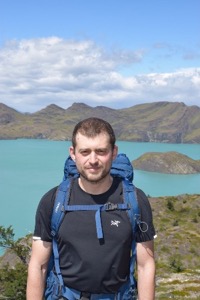
- Boris Hanin, Assistant Professor, Princeton University
- Friday, February 10, 2023, 2:00–3:00 pm, MIT Kolker Room (26-414)
- Bayesian Interpolation with Deep Linear Networks
- This talk is based on joint work (arXiv:2212.14457) with Alexander Zlokapa, which gives exact non-asymptotic formulas for Bayesian posteriors in deep linear networks. After providing some general motivation, I will focus on explaining results of two kinds. First, I will state a precise result showing that infinitely deep linear networks compute optimal posteriors starting from universal, data-agnostic priors. Second, I will explain how a novel scaling parameter – given by # data * depth / width – controls the effective depth and complexity of the posterior.
- YouTube Recording
Fall 2022
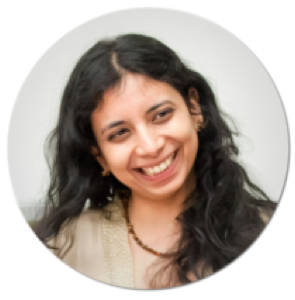
- Anima Anandkumar, Professor, Caltech & Director of ML, NVIDIA
- Tuesday, November 1, 2022, 11:00 am–12:00 pm, MIT Star Conference room
- AI Accelerating Sciences: Neural operators for Learning Between Function Spaces
- Deep learning surrogate models have shown promise in modeling complex physical phenomena such as fluid flows, molecular dynamics, and material properties. However, standard neural networks assume finite-dimensional inputs and outputs, and hence, cannot withstand a change in resolution or discretization between training and testing. We introduce Fourier neural operators that can learn operators, which are mappings between infinite dimensional function spaces. They are discretization-invariant and can generalize beyond the discretization or resolution of training data. When applied to modeling weather forecasting, Carbon Capture and Storage (CCS), material plasticity and many other processes, neural operators capture fine-scale phenomena and have similar skill as the gold-standard numerical weather models, while being 4-5 orders of magnitude faster.
- YouTube Recording | Talk Slides
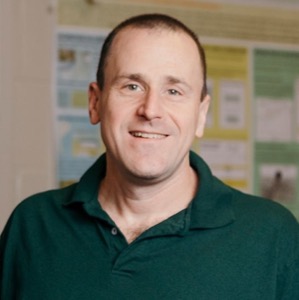
- Daniel Goldman, Professor, Georgia Tech
- Friday, October 14, 2022, 2:00 pm–3:00 pm, MIT Kolker room (26-414)
- Robophysics: robotics meets physics
- Robots will soon move from the factory floor and into our lives (e.g. autonomous cars, package delivery drones, and search-and-rescue devices). However, compared to living systems, robot capabilities in complex environments are limited. I believe the mindset and tools of physics can help facilitate the creation of robust self-propelled autonomous systems. This “robophysics” approach – the systematic search for novel dynamics and principles in robotic systems – can aid the computer science and engineering approaches which have proven successful in less complex environments. The rapidly decreasing cost of constructing sophisticated robot models with easy access to significant computational power bodes well for such interactions. And such devices are valuable as models of living systems (complementing theoretical and computational modeling approaches) and can lead to development of engineered devices that begin to achieve life-like locomotor abilities on and within complex environments. They also provide excellent tools to study questions in active matter physics. In this talk, I will provide examples of the above using recent studies in which concepts from modern physics–geometric phase and mechanical “diffraction” – have led to new insights into biological and engineered locomotion across scales.
- YouTube Recording
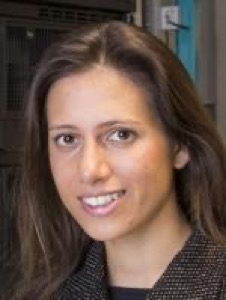
- Lucy Colwell, Associate Professor, Cambridge University
- Friday, September 16, 2022, 2:00 pm–3:00 pm, MIT Kolker Room (26-414)
- Data-driven ML models that predict protein function from sequence
- The ability to predict protein function directly from sequence is a central challenge that will enable the discovery of new proteins with specific functional properties. The evolutionary trajectory of a protein through sequence space is constrained by its functional requirements, and the explosive growth of evolutionary sequence data allows the natural variation present in homologous sequences to be used to infer these constraints and accurately predict protein function. However, state-of-the-art alignment-based techniques cannot predict function for one-third of microbial protein sequences, hampering our ability to exploit data from diverse organisms. I will present ML models that accurately predict the presence and location of functional domains within protein sequences. These models have recently added hundreds of millions of annotations to public databases that could not be made using existing approaches. A key advance is the ability for models to extrapolate and thus to be able to accurately predict functional annotations that were not seen during model training. To address this challenge we draw inspiration from recent advances in natural language processing to train models that translate between amino acid sequences and functional descriptions. Finally, I will illustrate the potential of active learning to discover new sequences through the design and experimental validation of proteins and peptides for therapeutic applications.
- YouTube Recording
Spring 2022
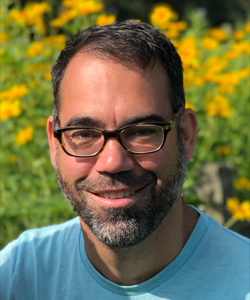
- Kyle Cranmer, Professor of Physics and Data Science, New York University; Visiting Scientist at Meta AI
- Friday, February 18, 2022, 2:00 pm–3:00 pm, Virtual
- Vignettes in physics-inspired AI research
- Distinct from pure basic research and pure applied research is the concept of use-inspired research. The claim is that foundational advances are often inspired by the context and particularities of a specific applied problem setting – reality is stranger than fiction. I will give a few examples of advances in AI inspired by problems in physics, which have also been found to be useful in unexpected areas ranging from algorithmic fairness, genomics, and epidemiology.
- YouTube Recording | Talk Slides

- Giuseppe Carleo, Assistant Professor, Computational Quantum Science Laboratory, École Polytechnique
- Friday, March 4, 2022, 2:00 pm–3:00 pm, Virtual
- Neural-Network Quantum States: new computational possibilities at the boundaries of the many-body problem
- Machine-learning-based approaches, routinely adopted in cutting-edge industrial applications, are being increasingly adopted to study fundamental problems in science. Many-body physics is very much at the forefront of these exciting developments, given its intrinsic ‘big-data’ nature. In this talk, I will present selected applications to the quantum realm, discussing how a systematic and controlled machine learning of the many-body wave-function can be realized, and how these approaches outperform existing state-of-the-art methods in various domains.
- YouTube Recording | Talk Slides
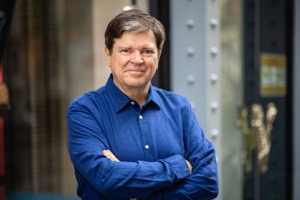
- Yann LeCun, VP and Chief AI Scientist, Meta
- Friday, April 1, 2022, 2:00 pm–3:00 pm, Virtual
- A path towards human-level intelligence
- In his talk, Yann LeCun will discuss a path towards human-level intelligence, drawing on his extensive expertise in the field of artificial intelligence and deep learning.
- YouTube Recording | Talk Slides

- Hiranya Peiris, Professor of Astrophysics, University College London; Professor of Cosmoparticle Physics at the Oskar Klein Centre, Stockholm
- Friday, April 15, 2022, 2:00 pm–3:00 pm, Virtual
- Prospects for understanding the physics of the Universe
- The remarkable progress in cosmology over the last decades has been driven by the close interplay between theory and observations. Observational discoveries have led to a standard model of cosmology with ingredients that are not present in the standard model of particle physics – dark matter, dark energy, and a primordial origin for cosmic structure. Their physical nature remains a mystery, motivating a new generation of ambitious sky surveys. However, it has become clear that formidable modeling and analysis challenges stand in the way of establishing how these ingredients fit into fundamental physics. I will discuss progress in harnessing advanced machine-learning techniques to address these challenges, giving some illustrative examples. I will highlight the particular relevance of interpretability and explainability in this field.
- YouTube Recording | Talk Slides
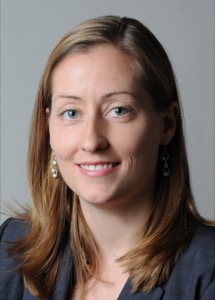
- Laura Waller, Associate Professor, EECS, University of California, Berkeley
- Friday, April 29, 2022, 2:00 pm–3:00 pm, Virtual
- Computational Microscopy
- Computational imaging involves the joint design of imaging system hardware and software, optimizing across the entire pipeline from acquisition to reconstruction. Computers can replace bulky and expensive optics by solving computational inverse problems, or images can be reconstructed from scattered light. This talk will describe new microscopes that use computational imaging to enable 3D, aberration and phase measurement using simple hardware that is easily adoptable and advanced image reconstruction algorithms based on large-scale optimization and learning.
- YouTube Recording
Fall 2021
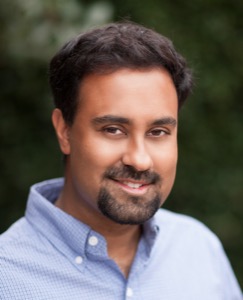
- Surya Ganguli, Associate Professor, Applied Physics, Stanford University
- Friday, September 17, 2021, 2:00 pm–3:00 pm, Virtual
- Understanding computation using physics and exploiting physics for computation
- We are witnessing an exciting interplay between physics, computation, and neurobiology that spans in multiple directions. In one direction, we can use the power of complex systems analysis, developed in theoretical physics and applied mathematics, to elucidate design principles governing how neural networks, both biological and artificial, learn and function. In another direction, we can exploit novel physics to instantiate new kinds of quantum neuromorphic computers using spins and photons. We will give several vignettes in both directions, including determining the best optimization problem to solve in order to perform regression in high dimensions and describing a quantum associative memory instantiated in a multimode cavity QED system.
- YouTube Recording | Talk Slides
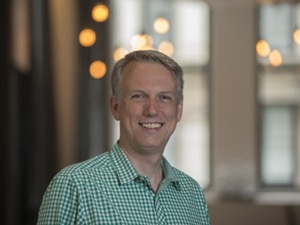
- Ben Wandelt, Director, Lagrange Institute
- Friday, October 1, 2021, 2:00 pm–3:00 pm, Virtual
- Learning the Universe
- To realize the advances in cosmological knowledge we desire in the coming decade will require a new way for cosmological theory, simulation, and inference to interplay. As cosmologists, we wish to learn about the origin, composition, evolution, and fate of the cosmos from all accessible sources of astronomical data, such as the cosmic microwave background, galaxy surveys, or electromagnetic and gravitational wave transients. I will discuss simulation-based, full-physics modeling approaches to cosmology powered by new ways of designing and running simulations of cosmological observables and of confronting models with data. Innovative machine-learning methods play an important role in making this possible, with the goal of using current and next-generation data to reconstruct the cosmological initial conditions and constrain cosmological physics much more completely than has been feasible in the past.
- YouTube Recording | Talk Slides

- Rose Yu, Assistant Professor, Computer Science and Engineering, UC San Diego
- Friday, October 15, 2021, 2:00 pm–3:00 pm, Virtual
- Physics-Guided AI for Learning Spatiotemporal Dynamics
- Applications such as public health, transportation, and climate science often require learning complex dynamics from large-scale spatiotemporal data. While deep learning has shown tremendous success in these domains, it remains a grand challenge to incorporate physical principles in a systematic manner to the design, training, and inference of such models. In this talk, we will demonstrate how to principally integrate physics in AI models and algorithms to achieve both prediction accuracy and physical consistency. We will showcase the application of these methods to problems such as forecasting COVID-19, traffic modeling, and accelerating turbulence simulations.
- YouTube Recording | Talk Slides
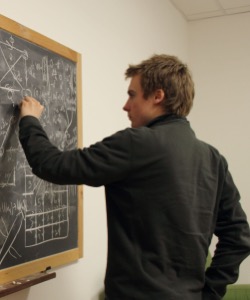
- Sven Krippendorf, Senior Researcher, Mathematical Physics and String Theory, Ludwig-Maximilians Universität
- Friday, October 29, 2021, 2:00 pm–3:00 pm, Virtual
- Theoretical Physicists’ Biases Meet Machine Learning
- Many recent successes in machine learning (ML) resemble the success story in theoretical particle physics of utilizing symmetries as an organizing principle. In this talk, we discuss an introductory example where this procedure applied in ML leads to new insights into PDEs in mathematical physics. We also discuss methods for identifying symmetries of a system without requiring prior knowledge about such symmetries, including how to find a Lax pair/connection associated with integrable systems. Additionally, we explore how latent representations in neural networks can offer a close resemblance to variables used in dual descriptions established analytically in physical systems.
- YouTube Recording | Talk Slides

- Yasaman Bahri, Research Scientist, Google Research, Brain Team, Google Research
- Friday, November 12, 2021, 2:00 pm–3:00 pm, Virtual
- Understanding deep learning
- Deep neural networks are a rich class of function approximators that are now ubiquitous in many domains and enable new frontiers in physics and other sciences, but their function, limitations, and governing principles are not yet well-understood. In this talk, we will overview results from a research program seeking to understand deep learning scientifically. These investigations draw ideas, tools, and inspiration from theoretical physics, with close guidance from computational experiments and integrate together perspectives from computer science and statistics. We will discuss some past highlights from the study of overparameterized neural networks, such as exact connections to Gaussian processes and linear models, as well as information propagation in deep networks, and focus on emerging questions surrounding the role of scale (so-called “scaling laws”) and predictability.
- YouTube Recording | Talk Slides

- Kazuhiro Terao, Staff Scientist, SLAC National Accelerator Laboratory, Stanford University, SLAC National Accelerator Laboratory
- Friday, December 10, 2021, 2:00 pm–3:00 pm, Virtual
- Machines to find ghost particles in big data
- The neutrino is the most mysterious of the standard model particles. They only interact weakly and can pass through light years of matter without leaving a trace. A new generation of neutrino experiments is coming online to address questions related to neutrinos in the era of high-precision measurements. These experiments use Liquid Argon Time Projection Chambers (LArTPC) as detectors capable of recording images of charged particle tracks with high resolution. Analyzing high-resolution imaging data can be challenging, requiring the development of many algorithms to identify and assemble features of the events in order to reconstruct neutrino interactions. In this talk, we will discuss the challenges of data reconstruction for imaging detectors and recent work using deep neural networks (DNNs) for data reconstruction in LArTPC experiments.
- YouTube Recording | Talk Slides
Spring 2021
In Spring 2021, our colloquium series featured IAIFI senior investigators, aiming to introduce you to some of the exciting research being carried out at our institute.
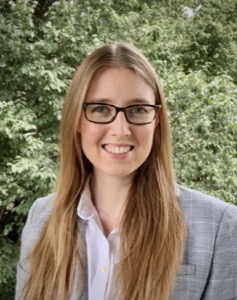
- Phiala Shanahan, Assistant Professor, MIT
- Thursday, February 4, 2021, 11:00 am–12:00 pm, Virtual
- Ab-initio AI for first-principles calculations of the structure of matter
- The unifying theme of IAIFI is “ab-initio AI”: novel approaches to AI that draw from, and are motivated by, aspects of fundamental physics. In this context, I will discuss opportunities for machine learning, in particular generative models, to accelerate first-principles lattice quantum field theory calculations in particle and nuclear physics. Particular challenges in this context include incorporating complex (gauge) symmetries into model architectures, and scaling models to the large number of degrees of freedom of state-of-the-art numerical studies. I will show the results of proof-of-principle studies that demonstrate that sampling from generative models can be orders of magnitude more efficient than traditional Hamiltonian/hybrid Monte Carlo approaches in this context.
- YouTube Recording | Talk Slides
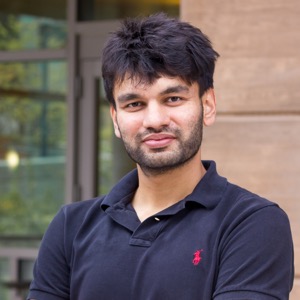
- Pulkit Agrawal, Assistant Professor, MIT
- Thursday, February 18, 2021, 12:30 pm–1:30 pm (Note special time!), Virtual
- Challenges in Real World Reinforcement Learning
- In recent years, reinforcement learning (RL) algorithms have achieved impressive results on many tasks. However, for most systems, RL algorithms still remain impractical. In this talk, I will discuss some of the underlying challenges: (i) defining and measuring reward functions; (ii) data inefficiency; (iii) poor transfer across tasks. I will end by discussing some directions pursued in my lab to overcome these problems.
- YouTube Recording | Talk Slides
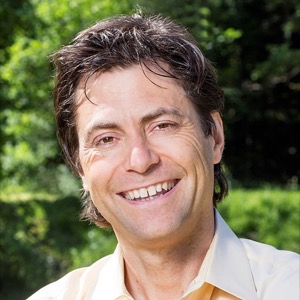
- Max Tegmark, Professor, MIT
- Thursday, March 4, 2021, 11:00 am–12:00 pm, Virtual
- ML-discovery of equations, conservation laws and useful degrees of freedom
- A central goal of physics is to discover mathematical patterns in data. I describe how we can automate such tasks with machine learning and not only discover symbolic formulas accurately matching datasets (so-called symbolic regression), equations of motion and conserved quantities, but also auto-discover which degrees of freedom are most useful for predicting time evolution (for example, optimal generalized coordinates extracted from video data). The methods I present exploit numerous ideas from physics to recursively simplify neural networks, ranging from symmetries to differentiable manifolds, curvature and topological defects, and also take advantage of mathematical insights from knot theory and graph modularity.
- YouTube Recording | Talk Slides

- Phil Harris, Assistant Professor, MIT
- Thursday, March 18, 2021, 11:00 am–12:00 pm, Virtual
- Quick and Quirk with Quarks: Ultrafast AI with Real-Time systems and Anomaly detection For the LHC and beyond
- With data rates rivaling 1 petabit/s, the LHC detectors have some of the largest data rates in the world. If we were to save every collision to disk, we would exceed the world’s storage by many orders of magnitude. As a consequence, we need to analyze the data in real-time. In this talk, we will discuss new technology that allows us to be able to deploy AI algorithms at ultra-low latencies to process information at the LHC at incredible speeds. Furthermore, we comment on how this can change the nature of real-time systems across many domains, including Gravitational Wave Astrophysics. In addition to real-time AI, we present new ideas on anomaly detection that builds on recent developments in the field of semi-supervised learning. We show that these ideas are quickly opening up possibilities for a new class of measurements at the LHC and beyond.
- YouTube Recording | Talk Slides
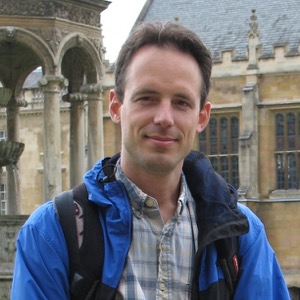
- Doug Finkbeiner, Professor, Harvard
- Thursday, April 1, 2021, 11:00 am–12:00 pm, Virtual
- Beyond the Gaussian: A Higher-Order Correlation Statistic for the Interstellar Medium
- Our project to map Milky Way dust has produced 3-D maps of dust density and precise cloud distances, leading to the discovery of the structure known as the Radcliffe Wave. However, these advances have not yet allowed us to do something the CMB community takes for granted: read physical model parameters off of the observed density patterns. The CMB is (almost) a Gaussian random field, so the power spectrum contains the information needed to constrain cosmological parameters. In contrast, dust clouds and filaments require higher-order correlation statistics to capture relevant information. I will present a statistic based on the wavelet scattering transform (WST) that captures essential features of ISM turbulence in MHD simulations and maps them onto physical parameters. This statistic is lightweight (easy to understand and fast to evaluate) and provides a framework for comparing ISM theory and observation in a rigorous way.
- YouTube Recording | Talk Slides
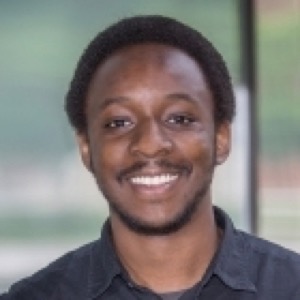
- Demba Ba, Professor, Harvard
- Thursday, April 15, 2021, 11:00 am–12:00 pm, Virtual
- Interpretable AI in Neuroscience: Sparse Coding, Artificial Neural Networks, and the Brain
- Sparse signal processing relies on the assumption that we can express data of interest as the superposition of a small number of elements from a typically very large set or dictionary. As a guiding principle, sparsity plays an important role in the physical principles that govern many systems, the brain in particular. In this talk, I will focus on neuroscience. In the first part, I will show how to use sparse dictionary learning to design, in a principled fashion, ANNs for solving unsupervised pattern discovery and source separation problems in neuroscience. In the second part, I will introduce a deep generalization of a sparse coding model that makes predictions as to the principles of hierarchical sensory processing in the brain. Using neuroscience as an example, I will make the case that sparse generative models of data, along with the deep ReLU networks associated with them, may provide a framework that utilizes deep learning, in conjunction with experiment, to guide scientific discovery.
- YouTube Recording | Talk Slides
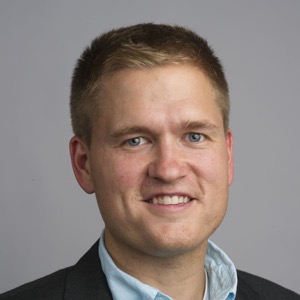
- Jim Halverson, Assistant Professor, Northeastern
- Thursday, April 29, 2021, 11:00 am–12:00 pm, Virtual
- Machine Learning and Knots
- Most applications of ML are applied to experimental data collected on Earth, rather than theoretical or mathematical datasets that have ab initio definitions, such as groups, topological classes of manifolds, or chiral gauge theories. Such mathematical landscapes are characterized by a high degree of structure and truly big data, including continuous or discrete infinite sets or finite sets larger than the number of particles in the visible universe. After introducing ab initio data, we will focus on one such dataset: mathematical knots, which admit a treatment using techniques from natural language processing via their braid representatives. Elements of knot theory will be introduced, including the use of ML for various problems that arise in it. For instance, reinforcement learning can be utilized to unknot complicated representations of trivial knots, similar to untangling headphones, but we will also use transformers for the unknot decision problem, as well as treating the general topological problem.
- YouTube Recording | Talk Slides